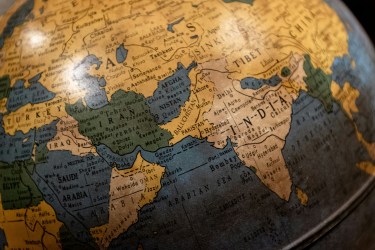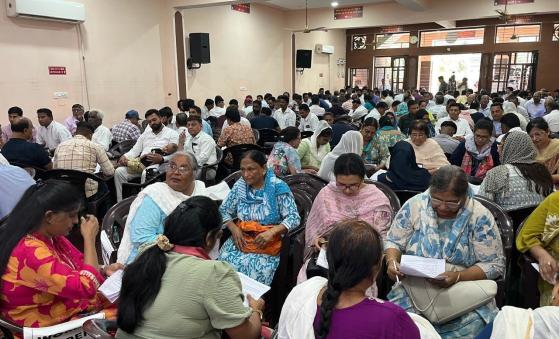
Christians worldwide have experienced their first decline as a proportion of the global population in recent decades, dropping from 30.6% to 28.8% between 2010 and 2020, according to a major new study by Pew Research Center.
The comprehensive analysis of religious demographics across 201 countries reveals that Muslims emerged as the fastest-growing religious group during this period, increasing from 23.9% to 25.6% of the world’s population. The Muslim population grew by 347 million people, more than the combined growth of all other religions.
Despite remaining the world’s largest religious group with 2.3 billion adherents, Christianity added only 122 million new followers during the decade. This growth rate failed to keep pace with overall global population expansion, resulting in Christians losing ground proportionally for the first time in modern history.
The study, based on an analysis of more than 2,700 censuses and surveys, identifies religious “switching” as the primary factor behind Christianity’s relative decline. Large numbers of people who were raised Christian, particularly in Western countries, have abandoned their faith to become religiously unaffiliated.
Globally, Christians experienced the largest net losses from religious switching, with 3.1 people leaving Christianity for every 1.0 who joined. Most former Christians became religiously unaffiliated, rather than converting to other faiths.
Sub-Saharan Africa has now overtaken Europe as the region with the largest Christian population. As of 2020, 30.7% of the world’s Christians live in sub-Saharan Africa, compared to 22.3% in Europe. This dramatic shift reflects higher fertility rates in Africa and widespread Christian disaffiliation in Western Europe.
The research reveals significant changes in individual countries. Australia, France, the United Kingdom, and Uruguay all lost their Christian majorities during the decade. Australia saw the steepest decline, with Christians dropping from 67% to 47% of the population.
India, home to the world’s largest Hindu population, maintained its religious composition with minimal change. Hindus comprise 79.4% of India’s 1.4 billion people as of 2020, virtually unchanged from the previous decade. The study estimates that approximately 31 million Christians live in India, representing 2.2% of the country’s population.
Unlike many Western nations experiencing dramatic religious shifts, India showed remarkable religious stability. The report notes that surveys indicate Hindus rarely switch out of their religion, contributing to India’s consistent religious composition. India ranks among the top 10 countries with the largest absolute numbers of Christians worldwide, despite Christians representing only a small percentage of the population.
“While these global trends underscore the urgency of the Great Commission, the data showing religious stability in India reflects the respect for individual choice that has always characterised our faith community. We remain committed to serving all communities through education, healthcare, and social work, and to making genuine disciples through voluntary faith decisions,” said Rev. Vijayesh Lal, speaking to Christian Today.
The report acknowledges measurement challenges regarding Indian Christians, noting that census figures may undercount this community. Some Christians belonging to Scheduled Castes reportedly identify as Hindu on official forms to retain access to caste-based government benefits. The researchers used unadjusted census figures for India to maintain consistency over time, rather than attempting to account for potential undercounting.
Religiously unaffiliated people, often called “nones,” became the third-largest global group, reaching 24.2% of the world population. This growth occurred despite demographic disadvantages, including older age structures and lower fertility rates. The increase stems primarily from people leaving Christianity rather than natural population growth.
China leads this trend with 1.3 billion religiously unaffiliated residents, representing 90% of its population. The United States now ranks second globally for religiously unaffiliated populations, surpassing Japan.
Buddhists represented the only major religious group to decline in absolute numbers, falling from 343 million to 324 million adherents. This decrease occurred mainly in East Asian countries, where many people raised Buddhist later abandoned the religion.
The research indicates that 75.8% of the world’s population identifies with some religion, while 24.2% claim no religious affiliation. This represents a notable shift from 2010, when 76.7% were religiously affiliated.
These demographic changes carry significant implications for global religious landscapes, political developments, and social dynamics in the coming decades.




